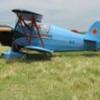
Sign in to follow this
Followers
0

Trying to understand Prop Feathering, Constant speed props etc
By
N1G, in MS FSX | FSX-SE Forum


By
N1G, in MS FSX | FSX-SE Forum